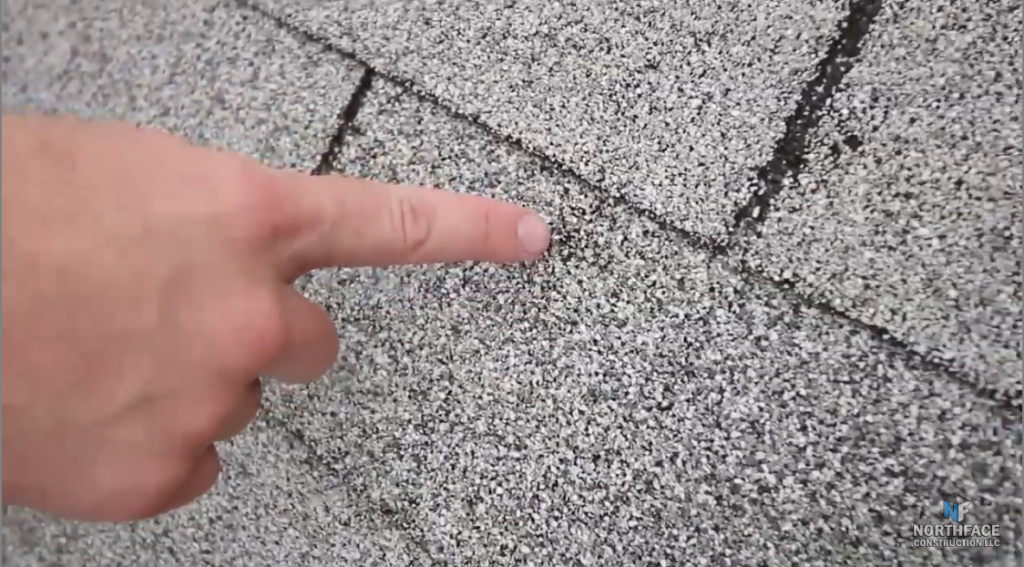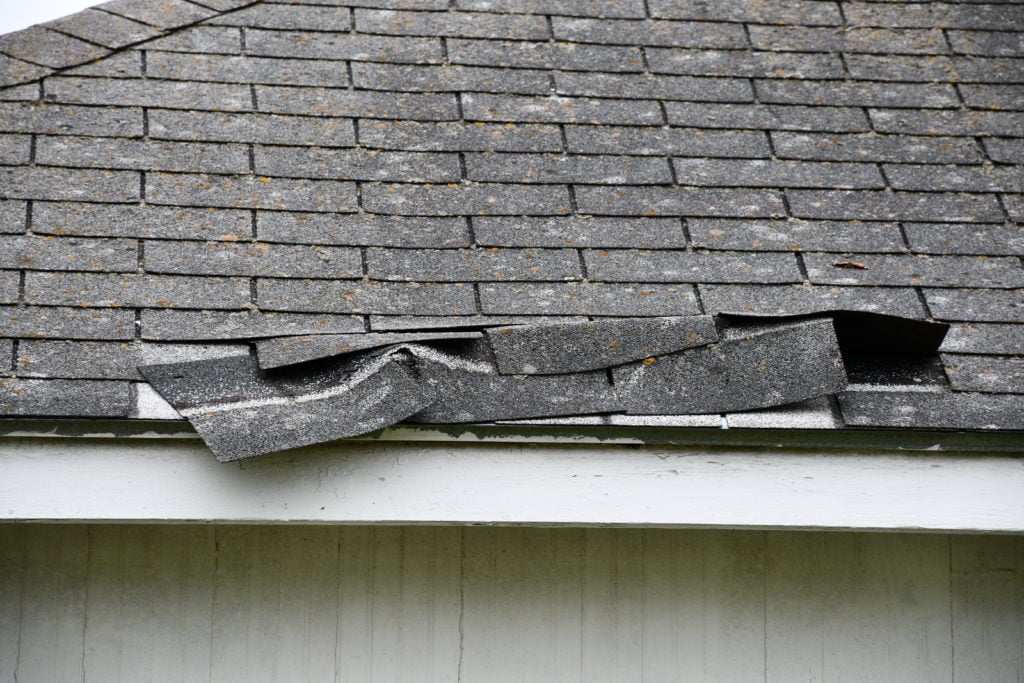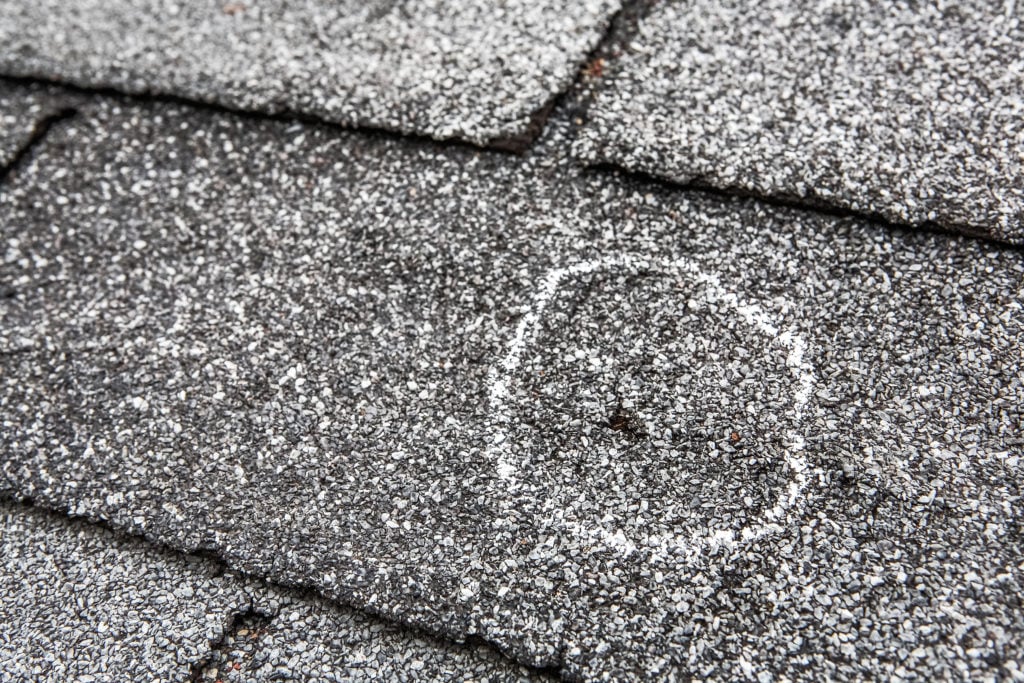A hail storm went through last night, and you could have sworn it sounded like thousands of rocks pummeling your roof. When you go to look, at first glance, you can’t really tell if it’s damaged or not. So what does hail damage look like on a roof after all?
You may not be able to see the damage from the ground, or even up near the edge of your roof. We recommend always hiring a professional to come to take a look. We are going to walk you through our steps to identifying damage during an inspection. Because the sooner you can catch and repair the damage, the more you prevent any further damage like water leaks and mold growth.
How to Spot Hail Damage After a Storm
There are a few tell-tale signs that homeowners can look for if hail came through and they suspect damage to their roof or siding. If you notice any of the following, call Northface Construction for a more comprehensive inspection and to get a repair estimate.
- Missing, broken, or cracked shingles. These should be pretty easy to spot as they are leaving open areas on your roof or cause a break in the straight line of your installed shingles.
- Changes in color can indicate where granules have been knocked off. These spots will be darker because they are exposing the tar shingle underneath that protective layer.
- Granules in your gutters or at the bottom of your downspout. Another sign that granules have been knocked off your roof during a hail storm is if they made their way into your gutters and out with the water at the end of your downspouts.
- If your gutters are clogged with hail remnants or debris, that’s a good sign your roof got pummeled with hail large enough to clog your gutters, thus large enough to cause damage.
- Water spots in your attic can indicate a severe leak caused by hail blowing off or cracking your shingles. Checking the attic can be much easier and safer than getting up on your roof to check.
First Signs Of Hail Damage On Your Roof

First, we look for spots where granules are knocked away, and you see a change in the texture on the shingle itself, exposing the matting underneath. It may be subtle, or more obvious, but either way, it’s damage that can erode more over time. When we do our inspection, we will mark every nick we find with washable chalk. This will make it very clear for any insurance claims and inspections, then make it easy when we go back to repair.
Untreated Hail Damage Compounds Over Time
Over time, more and more granules will get knocked away exposing more of the asphalt matting underneath, exposing it to the elements such as moisture and UV rays. A secondary way to monitor if your roof has hail damage, without getting up on the roof, is if you notice granules washing out of the gutters.
Hail damage to your shingles not only exposes the matting underneath to the elements, and risk of leaks, but it overall degrades the lifetime of your original shingles. The asphalt can bubble up, lose its viscosity and fail sooner than your roof would normally.
Hail Damage Lowers Your Home’s Value
A damaged roof may never get worse, or may never leak, but this doesn’t mean it doesn’t need to be repaired. The “it’s fine” attitude will only last you so long. This damage, the second it occurs, lowers the value of your home. Take advantage of insurance opportunities right away. Check out Travelers view of roof hail damage.
Your home is a big investment, one you want to last, and loss of value is a major factor of hail damage on your roof. This will hurt you in the long run, by depreciating due to the condition of your home’s roof.
Repairing Hail Damage On Your Roof

The damage does not have to be obvious, or extensive, for it to become a problem. So, if you notice hail damage on your roof or other parts of your property there are some steps to take. As we stated, you should get an inspection, and file a claim.
If a storm recently went through your neighborhood, check out our post on the first things to do after a major storm.
Then, there are two things you can do: 1) You can think the damage is minimal, and wait until your ceilings start showing signs of leaks – in which this will be too late for easy repairs. 2) Or, we can come to repair the minimal damage early, before any further damage occurs. Take care of your investment, and give us a call!




